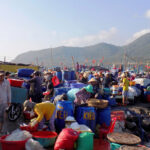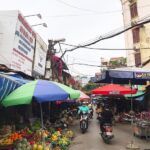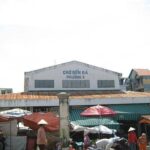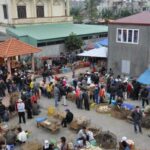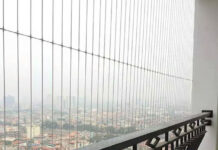King Bao Dai’s Palace – Hai Phong City, Do Son District
Located on Vung Hill in Ward 2 of Do Son, in the Van Hung neighborhood of Do Son District, Hai Phong, King Bao Dai’s Palace spans over 3,700 square meters, with the villa itself occupying 1,000 square meters. It sits at an elevation of nearly 40 meters above sea level.
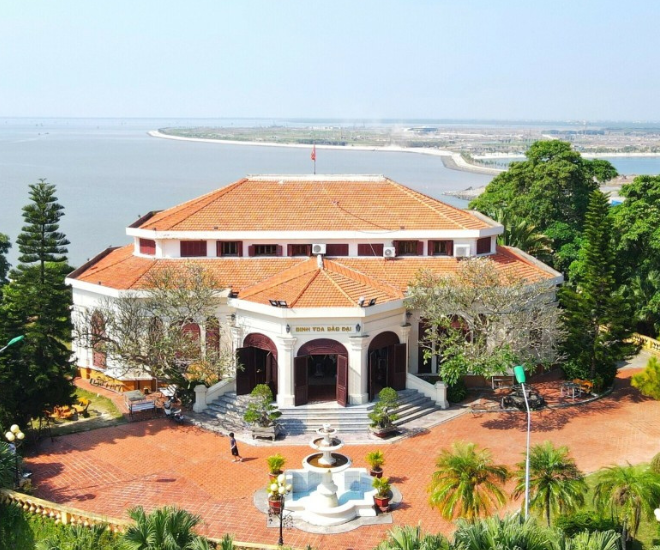
According to historical records, this palace was constructed in 1928. Initially named Villa Joséphine, it was built by the Indochinese government as a resort.
In 1932, when King Bao Dai visited, he was captivated by the architecture and scenery. In 1949, the Indochinese Governor-General presented the palace to King Bao Dai, after which it was renamed Bao Dai Villa, also known as “Bao Dai Mansion.”
King Bao Dai used this villa from 1933 to 1954 for work and vacation with his family whenever he traveled north.
During the resistance war against the French, the building was completely destroyed. In 1999, a company reconstructed the villa to its original design to develop tourism. Today, King Bao Dai’s Palace is a famous attraction in Hai Phong, attracting tourists from all over.
Bao Dai’s Residence – Buon Ma Thuot City, Dak Lak Province
Located at 4 Nguyen Du Street in Buon Ma Thuot City, this compound was originally a stilt house inhabited by Sabatier, the French government’s envoy to the Central Highlands. It was later rebuilt for King Bao Dai’s use. The site spans nearly seven hectares and features centuries-old trees. The current building showcases a beautiful architectural style, blending seamlessly with the traditional longhouse style of the Ede ethnic group, featuring tiled roofs and wooden floors.
Bao Dai’s Residence is constructed on an artificial rectangular mound, measuring over 2,000 square meters and standing about two meters above the courtyard, fortified with sturdy stone embankments.
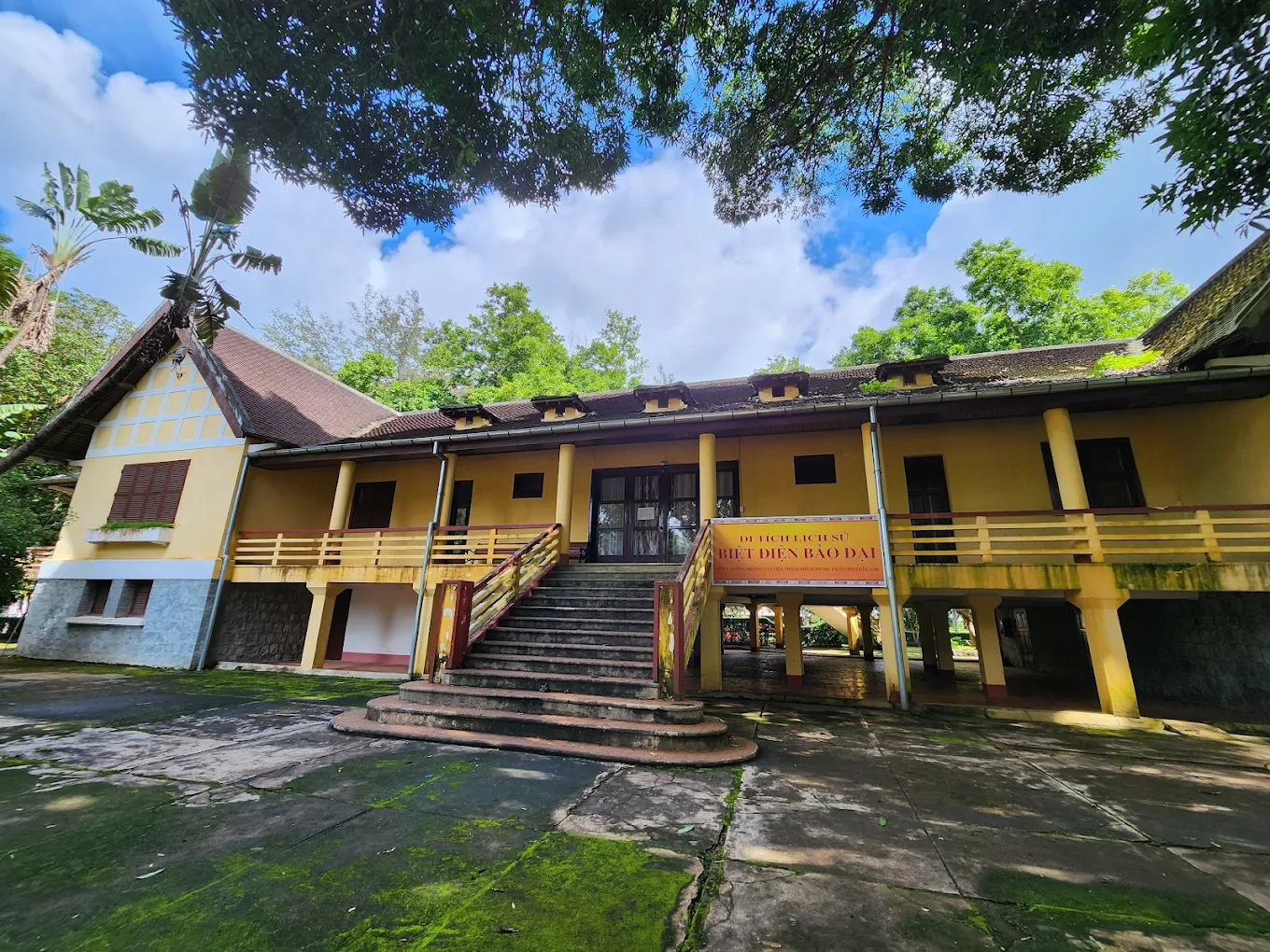
The residence is surrounded by greenery, creating a cool and refreshing atmosphere.
Today, the Bao Dai Residence Historical Site attracts visitors interested in learning about Vietnam’s last emperor and the historical, cultural, and artistic values of the Vietnamese feudal dynasty in Dak Lak.
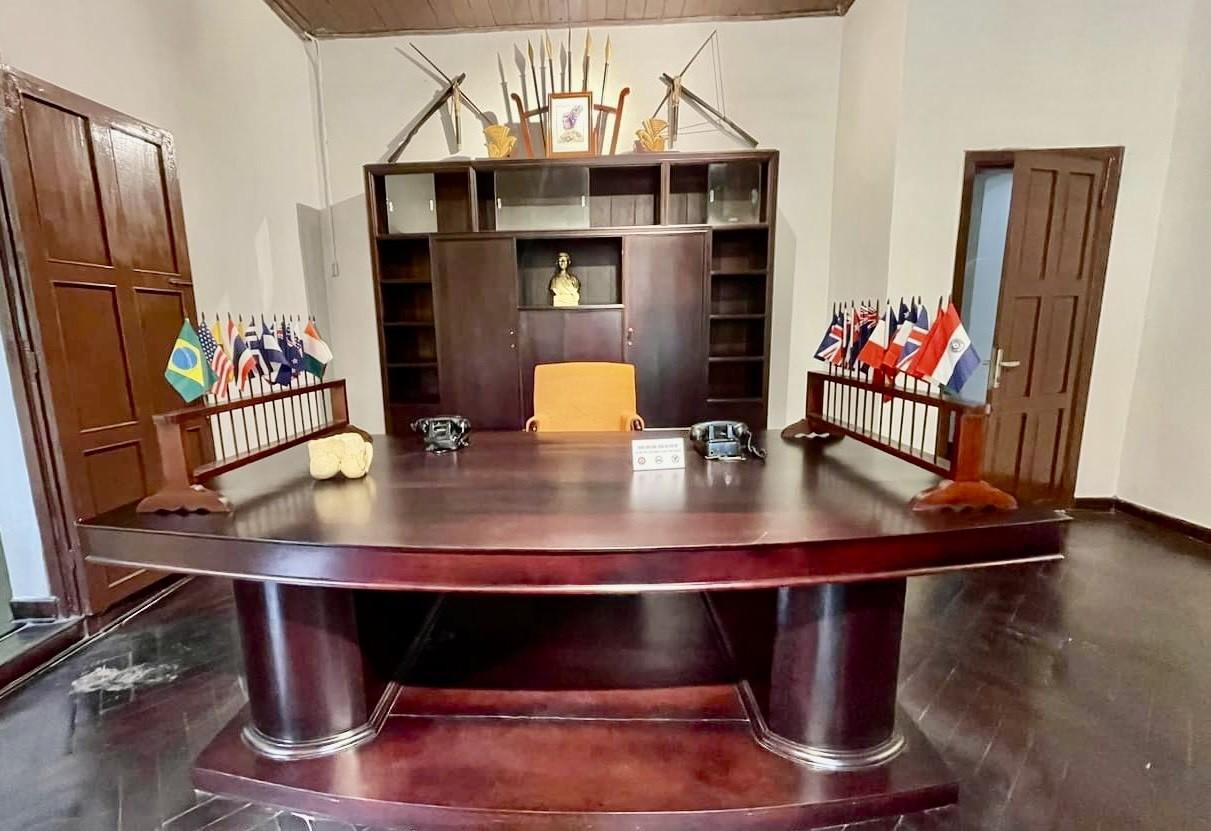
Inside is the emperor’s former workspace.
Stone Bridge Villa – Nha Trang City, Khanh Hoa Province
Stone Bridge Villa, also known as Bao Dai Villa, is an ancient architectural complex comprising five villas located on the peak of Mount Cảnh Long in Vinh Nguyen Ward, Nha Trang City, Khanh Hoa Province.
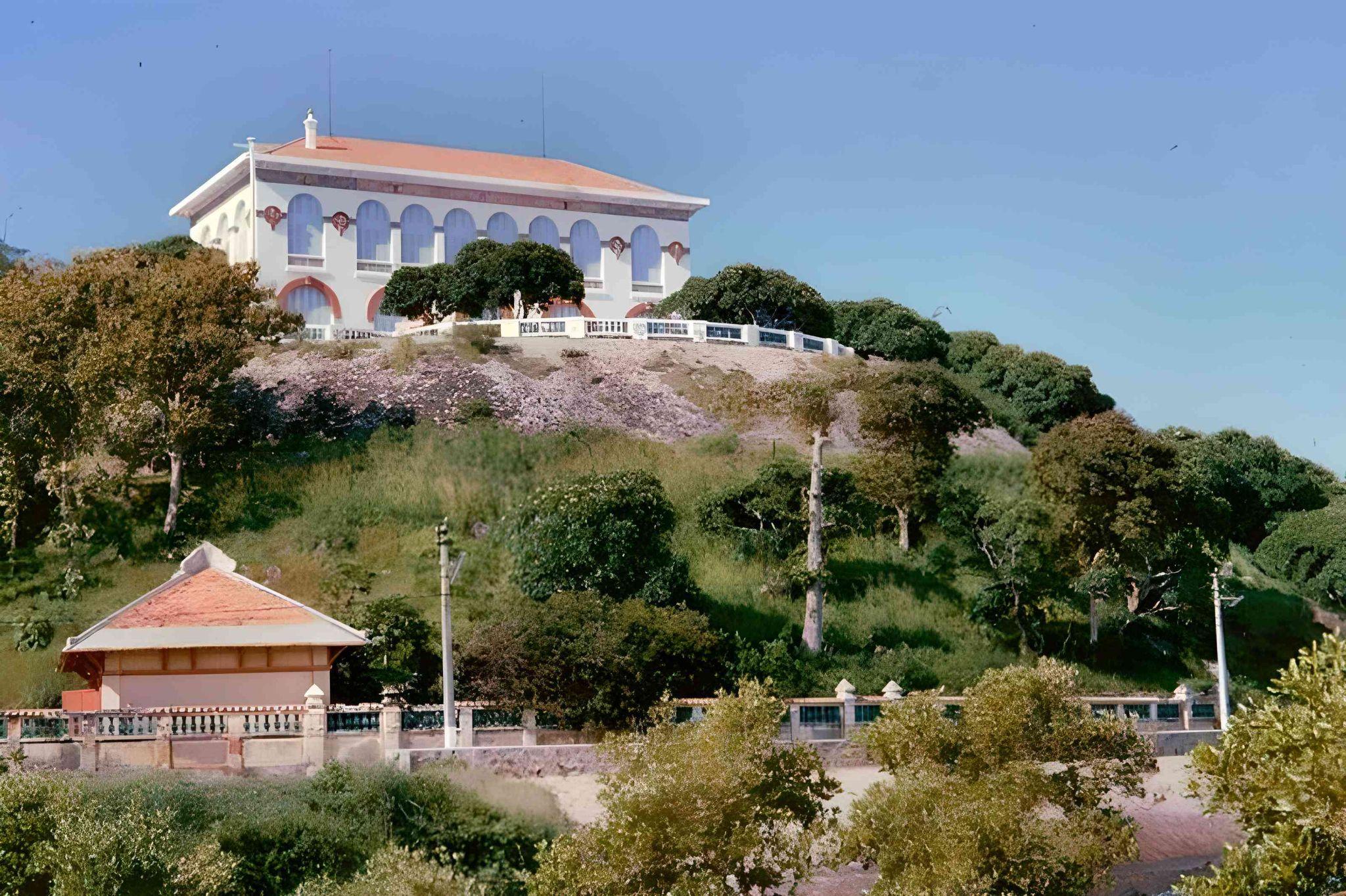
This site was constructed in 1923 by the French and served as a residence for marine biologists. There are five villas, each with a unique name: Les Agaves, Les Frangipaniers, Les Bougainvilliers, Les Flamboyants, and Les Badamniers.
Built in the French architectural style from 1923, it initially served as a residence and workplace for marine biologists. From 1940 to 1945, Emperor Bao Dai and Empress Nam Phuong frequently visited for vacations, and the complex became associated with Vietnam’s last emperor of the Nguyen Dynasty.
The villas at the Bao Dai Palace exhibit a strong French architectural influence, predominantly featuring the color white. This color choice exudes elegance and refinement while also adding a touch of luxury and sophistication to the complex.
The five villas are nestled within a 12-hectare compound surrounded by various tree species. The French named the villas after these trees: Les Agaves (Agave), Les Frangipaniers (Frangipani), Les Bougainvilliers (Bougainvillea), Les Flamboyants (Royal Poinciana), and Les Badamniers (Banyan).
Each villa offers a range of rooms, including living rooms, offices, bathrooms, kitchens, and bedrooms. Additionally, the complex features private beaches, tennis courts, a golf course, and a swimming pool for recreational purposes.
When King Bao Dai resided in Les Agaves (now commonly known as Nghinh Phong), he used the ground floor for meetings and receptions. The second floor served as his and the empress’s private quarters. Notably, they often enjoyed moon gazing and breezy evenings on the rooftop terrace.
From the villas, visitors can admire the breathtaking view of the green Nha Trang Bay, offering a regal vacation experience in the heart of the coastal city.
Bach Dinh – Vung Tau City, Ba Ria-Vung Tau Province
Bach Dinh, located on Tran Phu Street, south of Nui Lon Mountain, boasts a late-19th-century European architectural style and is surrounded by a small forest with a variety of trees, especially frangipani.
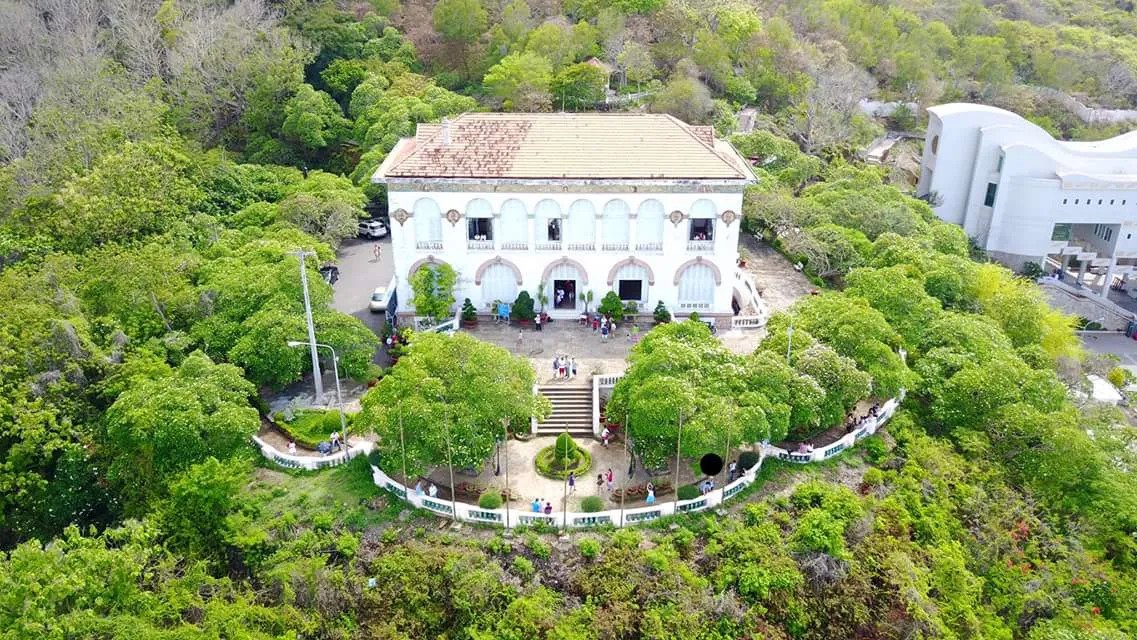
As a primitive architectural structure nestled quietly in the bustling seaside city, Bach Dinh is a prominent tourist attraction, often visited for sightseeing and photography by those traveling to Vung Tau.
Historically, this site served as the Phuoc Thang fortress, constructed by King Minh Mang in 1839 to control the Can Gio sea gate. In 1859, it was the starting point for the first resistance of the Vung Tau army against the French fleet attacking Saigon – Gia Dinh. Despite the eventual defeat, the spirit of patriotism remains etched in history.
After conquering the South, the French demolished the fortress. In 1898, Governor-General Paul Doumer built a new villa named Villa Blanche after his daughter. Painted white, it earned the moniker Bach Dinh from the locals. Paul Doumer never occupied it, as he was recalled, and his successor, Paul Beau, became its first resident. Since then, Bach Dinh has served as a vacation spot for the Indochinese Governors-General.
In 1934, it was transferred to King Bao Dai and Queen Nam Phuong as a summer residence, hence the name Dinh Bao Dai. According to legend, the Nguyen Dynasty empress favored this place for its beautiful scenery. Historical records indicate that following boisterous parties, Nam Phuong would retreat into solitude, as Bao Dai preferred socializing. During her lonely moments, she often strolled through the fragrant frangipani forest at Bach Dinh. Today, it stands as a cultural and historical tourist attraction in the coastal city.
From Bach Dinh, you can admire the beachfront view in front and the poetic mountain backdrop. Additionally, the surrounding natural area spans six hectares and features valuable tree species such as frangipani, filling the air with their distinctive fragrance.
Ideally located in the heart of Vung Tau, Bach Dinh offers panoramic views of the pristine and serene Bai Truoc beach from its many windows. It is a perfect spot for healing vacations and those interested in delving into history.
Tasty Treats in Hai Phong: A Foodie’s Guide to Indulging in Upscale Street Food, Port City Style
Nestled on Tran Nhat Duat Street, Co Dao Market is a culinary gem in the heart of Hai Phong. This vibrant marketplace offers a delightful array of cuisines, showcasing the best of local flavors. From humble delights like crab noodle soup and crab spring rolls to unique specialties such as stir-fried sea crab claws, this market is a foodie’s paradise.

























